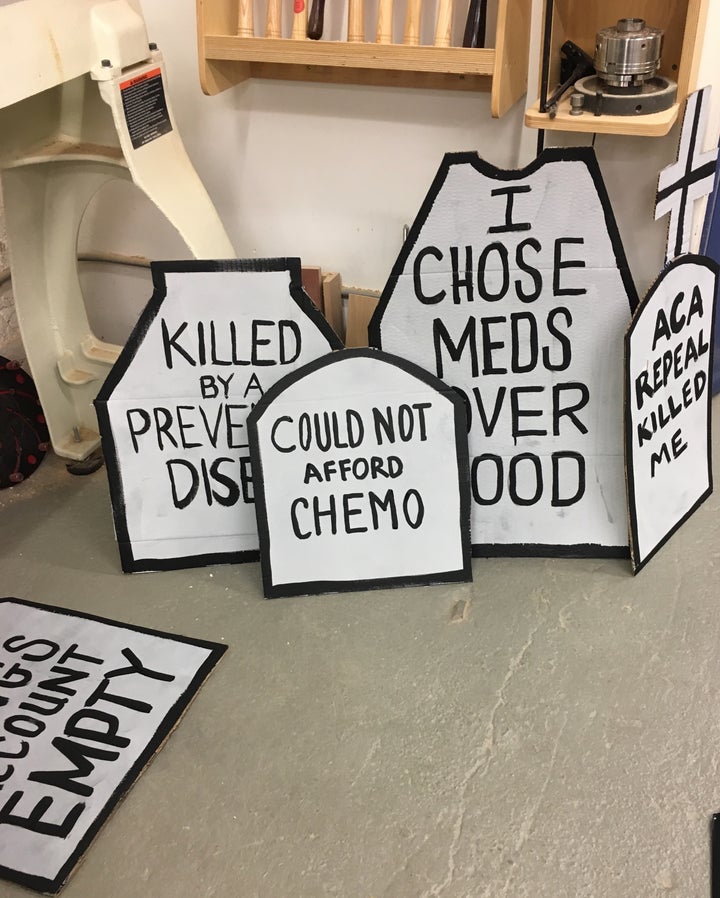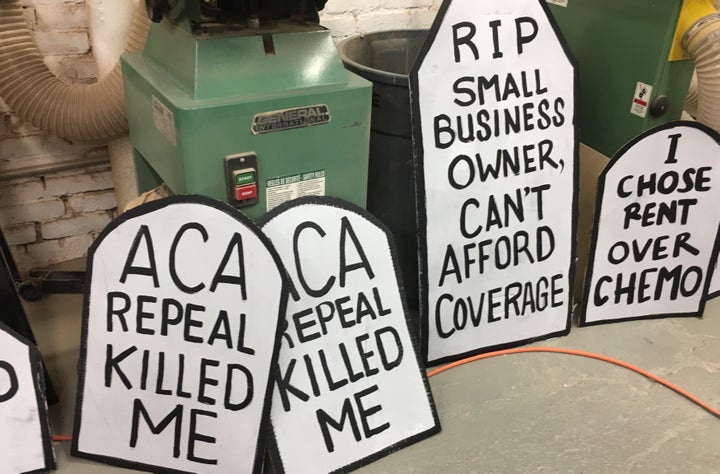Street protests are back. And they come in various forms: the march, the rally, the prayer service, the vigil.
And, that simplest form of street theater, the Die-In.
The Die-In is striking, unnatural and can be devastating. It can be used as gut-punch way to illustrate the real human impact of life-and-death policies, for instance, pertaining to the availability of health insurance, Medicaid, Medicare, and Social Security.
A visceral and visual form of protest, Die-Ins have been deployed by different groups for different reasons. Environmental activists, AIDS activists, gun control activists, anti-nuclear activists, cyclist safety activists, Black Lives Matter activists, and health provider activists have all staged them. The Die-In has been used to highlight violence against women in Madrid; by protestors against Egyptian president Sisi in London and by vegan activists in Paris. Sometimes they are held in a public space, like a park. Some are staged close to the belly of whatever beast is being challenged, such as the NRA, a government building, or a complacent Congress.
An article in the National Journal dates the American Die-In to the roiling 1970s, but the chances are that this imagery has been staged through the centuries. Why, beyond the truism that nothing’s new under the sun? Because in its silence and universal familiarity, the evocation of mass death is instantly recognizable, and disturbing. Because, it’s simple, and powerful.
The Die-In is easy to stage. But if this action captures your imagination, check out other actions described here: Protest Theater in an Age of Entertainment Politics , Bread and Puppet Theater and other social justice puppet groups, and the satirical group, Billionaires for Bush. All can be filed under the same category, as art and theater speaking power to authoritarianism, discrimination, and oppression.
NUTS AND BOLTS OF PLANNING A DIE-IN TO SUPPORT OF AFFORDABLE CARE ACT AND OTHER SAFETY NET PROGRAMS
In the current political environment, where long-held “safety net” programs are under attack by those in power, the Die-In format is one that can be used by activists nationwide. Here’s a template, of sorts:
What is a Die-In?: It’s a highly visual form of citizen protest that uses elements of street theater. During a Die-In, volunteers pretend to die, to convey the idea that something or someone—the target of the action—is literally killing people. Those pretending to have died remain play-dead for a few minutes, or longer. Often there’s a meditative silence during the Die-In. Signage and speeches are used to explain the issue. Die-Ins take space, are not spontaneous, and can be held before or after speeches, marches, rallies, and other events.
Where Do You Do It? Pick a location where your audience can see the action, and where a photographer can get a good photo from above, perhaps on steps or on a plaza. For the comfort of participants, grass is best. When picking a location, consult a photographer (or think like one).
How Many People? If you Google images of “die-ins,” it’s clear that even a few dozen people make a powerful visual.
Program: Unlike a rally where everyone is carrying signs, the action of “dying” needs context and explanation. Keep the dramatic dying element for last to ensure that your crowd stays till the end. Testimonials are powerful.
Props: Visuals that carry your message are useful, such as homemade cardboard cut-out tombstones, or signs. Sometimes those doing the “dying” to wear the same color clothing, say, black pants and white tops, for visual impact. If you are creating props, plan ahead. You can canvass local stores for free supplies, like cardboard boxes.
Messaging: The imagery of mass death is powerful, so the messaging can be simple and explanatory. Complex policy issues can be discussed by speakers, or in hand outs. (See below for specific health care messages from March 2017.)
Call to action: Participants and passersby may be engaged by the Die-In action. It’s a good moment to circulate petitions or delineate specific calls to action.

At a fake tombstone-making workshop in Brooklyn, preparing for a citizen “Die In” protest of efforts to “repeal/replace” the Affordable Care Act, also known as Obamacare. March 9, 2017
Choreography & Body Chalking: Plan out the choreography of the “dying” carefully, both for safety and for the photographic image. The “fallers” can fall in a pattern, a circle, a line, a pile. They can also be chalked with white chalk, so when the participating person stands up, the mark is left.
Avoiding Injuries/Distress: People can hurt themselves if they over dramatize, get dizzy or cold, or have mobility limitations. If the event is scheduled outdoors or during winter, advise participants to bring something to lie down on. If it’s scorching hot, sunscreen, sunglasses and hats are helpful. Also, people at risk or who have experienced loss, specifically from the issue being protested (like lack of insurance) might find the die-in distressing. You might remind people that participation in the Die-In is at participants’ own risk.
Media Before/After the Event: A Die-In is a made-for-media event. For that same reason, it can’t be overdone or overused, or what was powerful risks becoming trite. You can list “Photo Ops” in your pre-event press advisory. For instance: “Die-In of 50 health care providers.”
Getting Permits: This is a perfectly legal activity. Check with your local police department for rally, march, and sound permits. It’s perfectly possible to obtain them! Just allow sufficient time to fill in and submit the necessary forms.
Civil Disobedience: Die in’s have been used for intentional civil disobedience protests, for instance in blocking streets. If that’s what you are doing, know your rights, have necessary ID with you, and be prepared for the possibility of arrest.
Music: Consider taps, ringing a bell, reading out causes of death or political demands.

The author is a participant in the “Get Organized Brooklyn” community-based effort.
